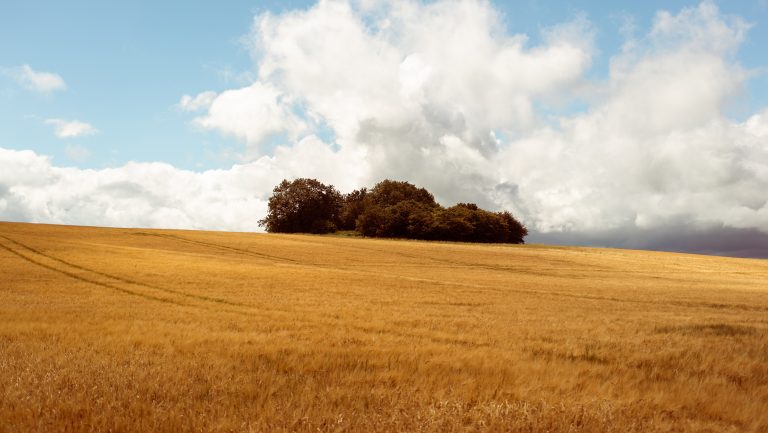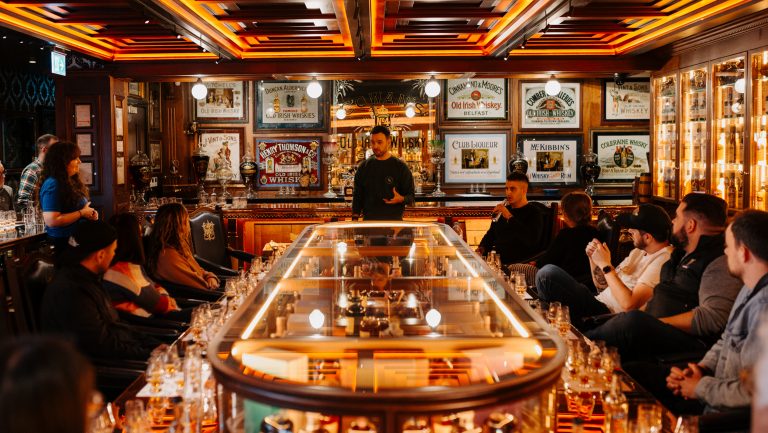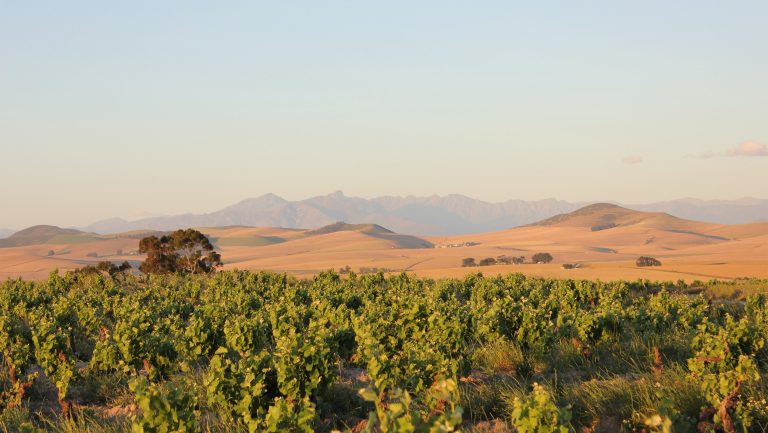French winemakers have recognized the importance of terroir for millennia and they’ve enshrined it in law. Yet for some reason, the whisky industry considers the concept of terroir heretical.
Terroir is the three-dimensional impact of soil, microclimate, and topography on the growth of a plant. In the case of malt whisky, that plant is barley, the very source of whisky’s flavor complexity.
For much of the whisky industry, barley is a commodity, cultivated for consistency and efficiency. To suggest that a spirit’s flavor will differ depending on where the barley grows on a farm-by-farm basis is, therefore, a most inconvenient truth.

Don’t miss the latest drinks industry news and insights. Sign up for our award-winning newsletters and get insider intel, resources, and trends delivered to your inbox every week.
In the whisky industry, there are many common reasons to deny terroir: Barley is just a grain and cannot express a sense of place; distillation removes terroir; and cask aging masks any possible terroir influence.
However, there’s a small but growing number of distillers who are working to prove the existence of terroir in whisky, such as Rob Arnold, academic and master distiller at the grain-focused Firestone & Robertson Distilling Co. in Texas; and Raasay Distillery in Scotland, which is experimenting with new malting barley varieties to grow on their island. In addition, more recently, there’s Waterford Distillery, a new single farm origin whisky producer in Ireland.
An Ambitious Experiment
“There are only three permissible raw ingredients for single malt whisky*: yeast, water, and barley,” explains Mark Reynier, Waterford’s CEO. “We are told whisky is all about the right water or the cask, but never about the barley. So why the blind spot?”
Reynier first experimented with terroir on the Scottish island of Islay, where he was the head of the Bruichladdich Distillery for 11 years. During the time when Reynier was at Bruichladdich, I was a whisky writer. I’d toured countless distilleries and had never heard anyone talk about ingredients the way Reynier did. I was intrigued. As a student, I studied environmental science, and to me, it made sense to focus on raw materials and terroirs.
What Reynier learned on Islay convinced him there was more to explore. In 2015, he created Waterford Distillery in southeast Ireland to demonstrate the existence of terroir in whisky, and I jumped at the opportunity to become involved in his project and joined the company as head of communications.
First, Reynier identified 40 farmers growing barley on 19 different types of soil in Ireland. Next, he contacted Dustin Herb, Ph.D., a barley scientist at Oregon State University who had presented a groundbreaking research paper on barley flavor at the World Brewing Congress in Denver in 2016, which had inspired Reynier. The experiments Dr. Herb used for the data effectively demonstrated terroir effect, so Reynier teamed up with Herb to create a model that could be adapted to whisky.

“This project needed an interdisciplinary study—plant genetics and physiology, agronomy, soil science, food chemistry—to enable us to develop insight into various aspects of whisky production,” Herb explains. “We were able to investigate the genetic mechanisms controlling barley contributions to whisky flavor, determine key environmental attributes to whisky terroir, identify sources of flavor variability in both barley production and processing, develop a library of whisky aroma compounds, and trace the influences of terroir through maturation.”
Historically, barley has been selected based on high-yield capabilities and flavor neutrality. “Since commercial production is typically produced over a wide range of environments, contemporary varieties need to have consistent performance. Therefore, the idea of terroir strikes at the foundation of the current system,” Herb says.
For Waterford’s academic project, two barley varieties, Olympus and Laureate, were sown in replication at two distinct sites in southeast Ireland near the small towns of Athy and Bunclody and harvested during 2017. In Athy, the soil is nutritionally richer—specifically in calcium, phosphorus, magnesium, and zinc—than the soil in Bunclody.
The malting, brewing, and distilling protocols remained identical for all samples. In order to achieve the objective of being able to identify environment-induced flavors, the team performed small lab-scale brewing and distillation of the malt samples according to standardized industry specifications. All sensory assessments were made on new make spirit, and sensory data was collected on panelist evaluations and the latest in mass spectrum gas chromatography. The full results are being submitted for two peer-reviewed publications later this year and again in early 2021.
Spoiler alert: Terroir happens to be perfectly demonstrable. Environmental differences in whisky flavor are indeed present. Sensory analysis indicated that the Athy site provided higher fruit and malt flavors compared to Bunclody, which was higher in green, grassy, mineral notes.

Bringing Single Farm Whisky to Market
Reynier wanted to replicate his lab results on a much larger scale and make single farm whiskies available commercially, an entirely more complicated endeavor. The infrastructure required to logistically manage individual lots of barley based on different terroirs is substantial.
Waterford continues to work with about 40 growers a year, including some that are farming organically and biodynamically—a total that now stands at 97 farmers to date. After each harvest, barley crops are stored separately in order to create an intricate traceability system. Each single farm origin whisky (120 tons per harvest) takes one week to ferment and another to perform a deliberately low and slow distillation.
With Herb, Waterford recently tracked three farms across three growing years, on three distinct soil types, with three blind sensory panels, and Waterford can now detect patterns in the flavor of each new spirit. Soil differences, even harvest differences, are visible for the first time. Each distinct terroir shares a clear flavor fingerprint.
“These flavors, ranging from fruity and floral to malty and grainy and earthy and herbal, varied between years within their respective soil series, which indicates a positive ‘vintage’ effect as it relates to annual changes in soil nutrients, weather patterns, and crop management,” Herb explains.
Waterford’s goal is to make the most profound single malt whisky possible in precisely the same way as the great vignerons of France make their wines. The starting point is single terroir plot production, to discover individuality. But the ultimate aim is to bring these nuanced spirits together, layer upon layer of unique flavor fingerprints for ultimate complexity.
By exploring terroir impact, we’ve found even more to discover. “We are merely scratching the surface,” says Herb. “This study highlights the importance of terroir, if you choose to look for it. There is lots to be gained harnessing terroir’s flavor variability, not least product diversity, and it opens opportunities for small-scale distilleries to develop niche markets.”
In addition, by recalibrating the whisky discussion in line with wine and many fine foods, the industry can attract a new generation of consumers. There have been naysayers and critics of Waterford’s project, but it’s been heartening to see younger, intellectually engaged, and diverse drinkers approach the spirit—and Waterford’s whiskies—with curiosity and an open mind.
In the 19th century, most of the famous distilleries grew out of clandestine distilling, and farmers used their own barley. Provenance was built in organically. Terroir used to matter, only it wasn’t called terroir then. It was just farming.
*While most Irish distillers use the spelling “whiskey,” Waterford elects to use whisky. Both are permissible under EU law, and we prefer without the “e” – which was historically the way. The “e” was added as something of a marketing tool to distinguish Irish spirit from inexpensive blended Scotch around the beginning of the 1900s by a group of Dublin distillers.

Dispatch
Sign up for our award-winning newsletter
Don’t miss the latest drinks industry news and insights—delivered to your inbox every week.
Mark Newton is the head of communications for the terroir-driven brands Waterford Distillery in Ireland and Renegade Rum in Grenada. He has written about whisky extensively for various publications, served as a taster for Whisky Magazine UK, and been a judge at numerous spirit competitions.







